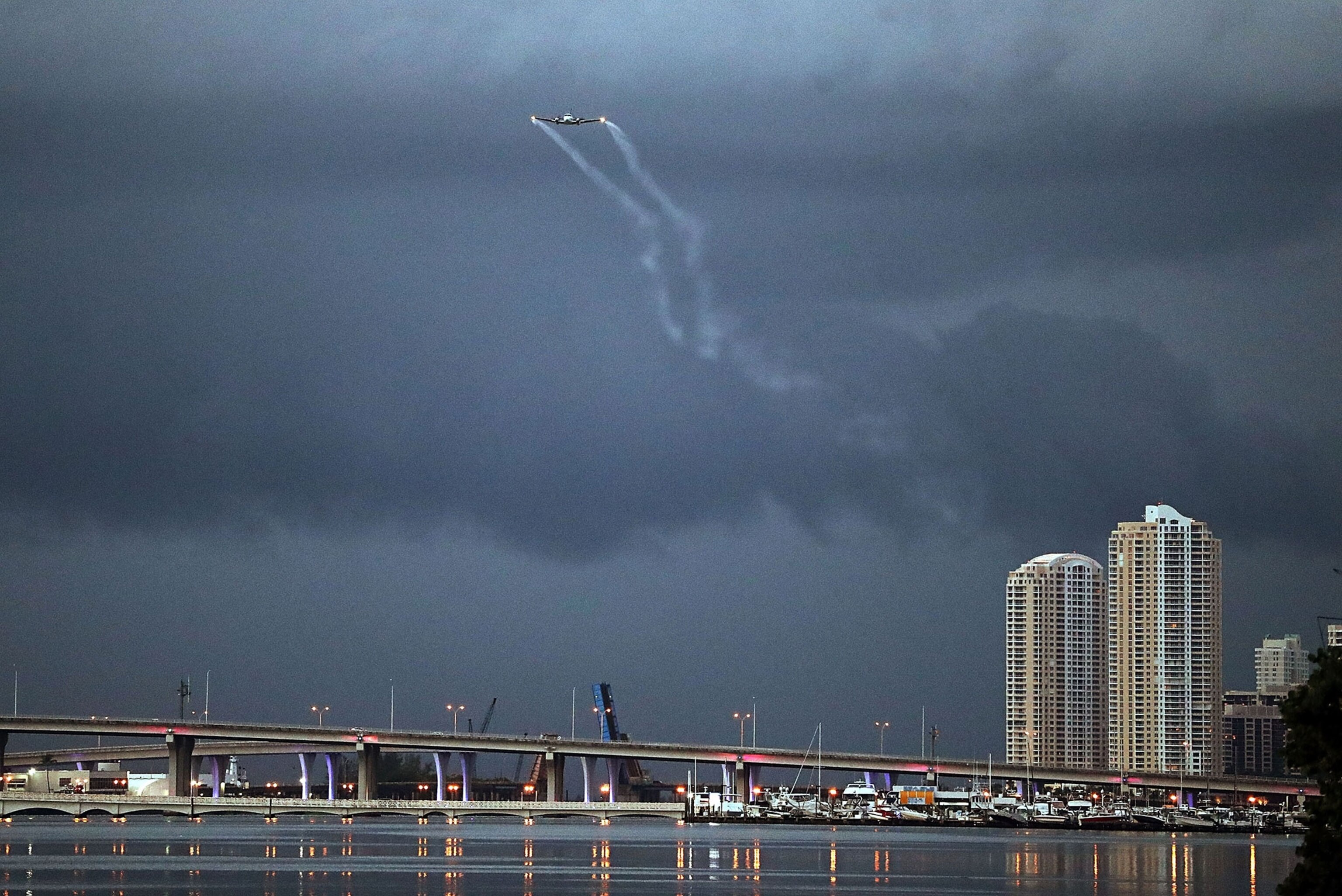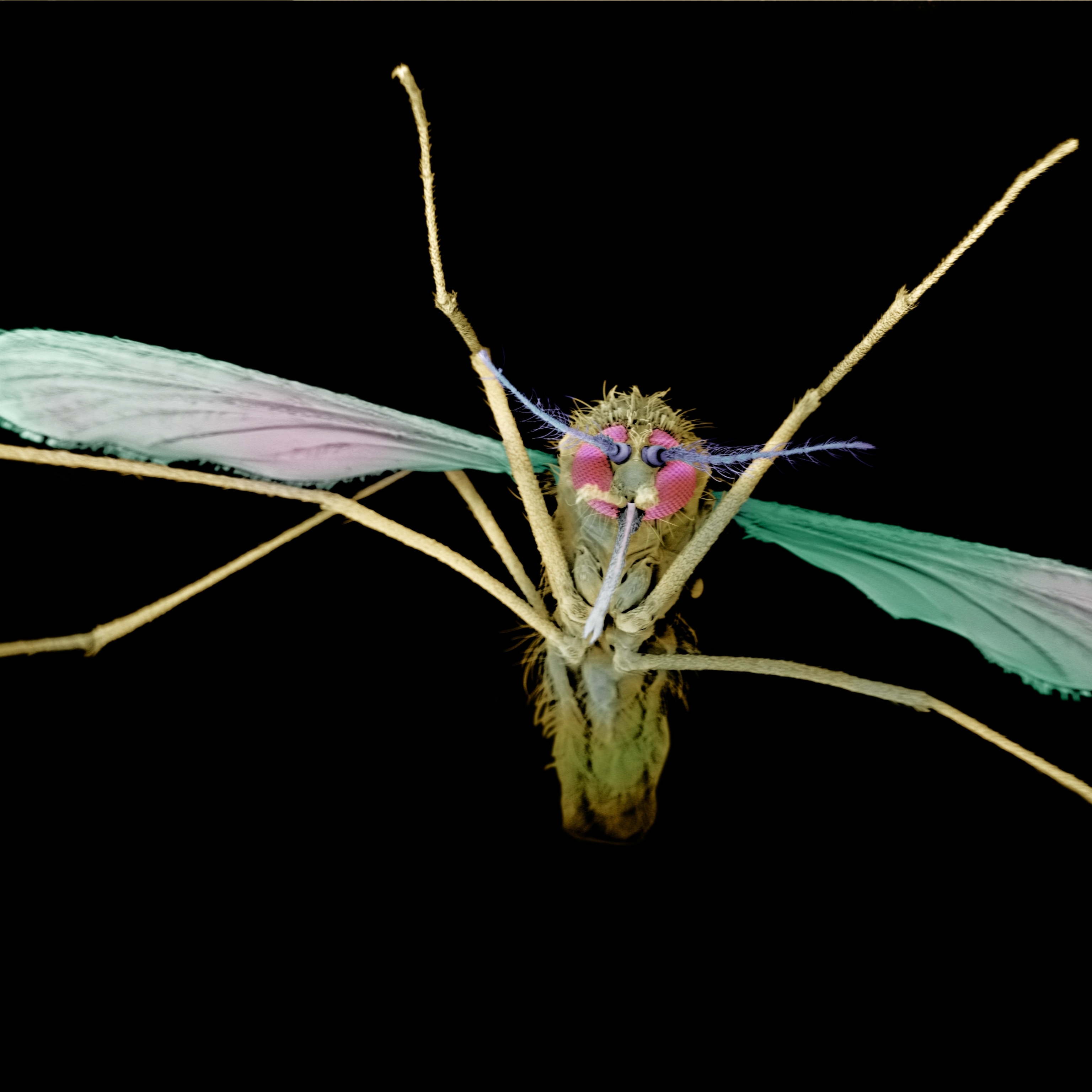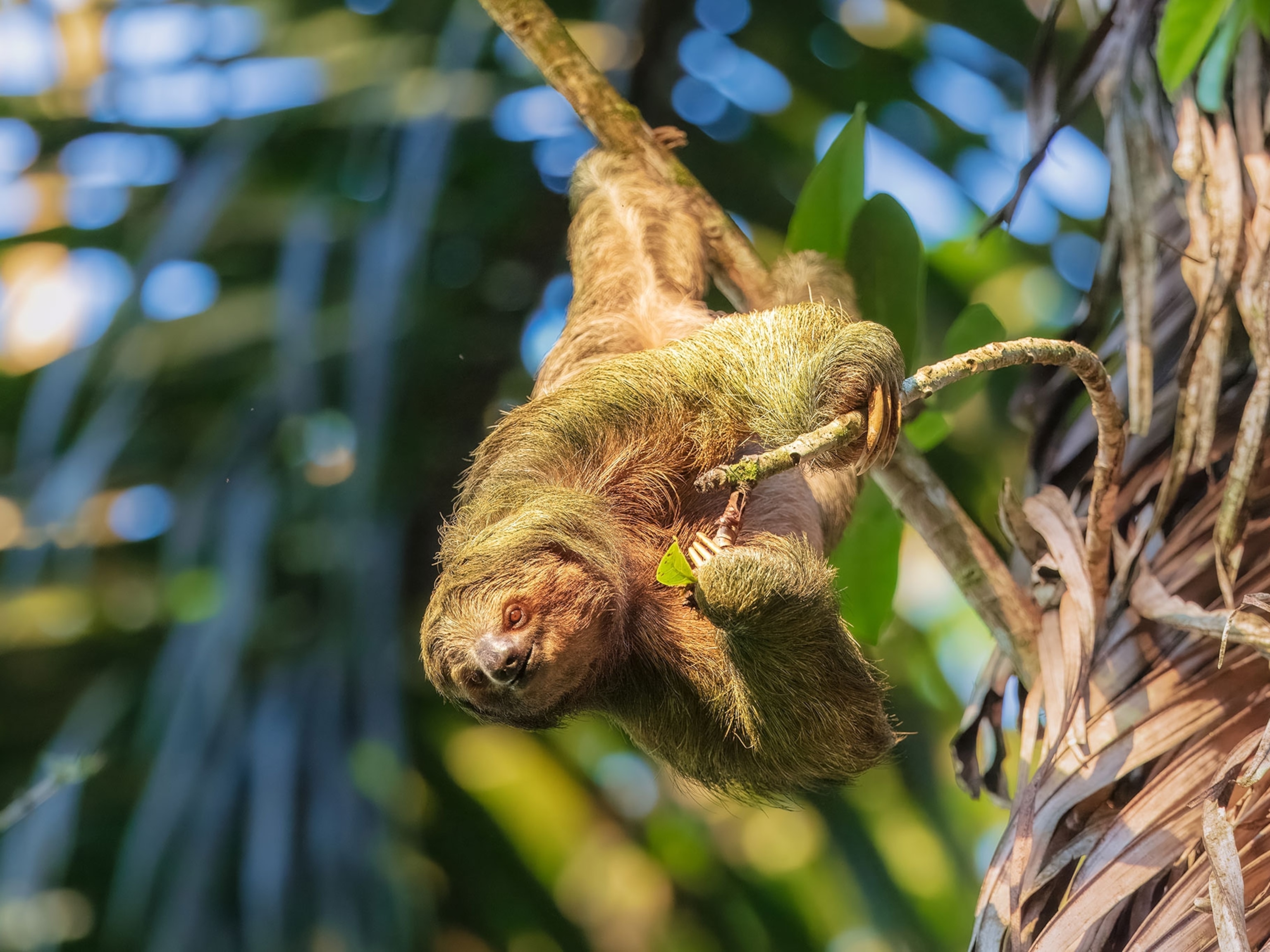
Zika's Accidental Ally: Miami's Luxury High-Rises
Low-flying planes, urban wind tunnels, and imprecise applications raise the risk of mosquitoes developing resistance to insecticides.
As Zika virus settles into Florida—there are now 43 cases in the state that aren’t linked to travel, and two hot spots of transmission in Miami—health authorities fighting the disease are running up against unexpected difficulties.
Despite proposals to alter mosquitoes genetically or with bacteria, the main weapon against Zika-carrying mosquitoes is still insecticides. But the way those compounds are delivered doesn’t fit the latest landscape where the insects are now flourishing—the high-rise hotels and luxury condos of Miami Beach.
That makes it more likely that some bugs will be missed by spraying campaigns or get less than a full dose of killing pesticides, allowing them to become resistant. And that scenario could play out not just in Miami but also in the similar Gulf Coast cities where federal health authorities say the disease may land next.
A Challenging ‘Hot Zone’
Thomas Frieden, director of the Centers for Disease Control and Prevention, alluded to this when he announced the agency was declaring Miami Beach to be a hot zone, the second one in the area after the entertainment district of Wynwood, north of Miami’s downtown.
“Miami Beach does have a series of characteristics that make it particularly challenging,” he told reporters in a briefing. “The aircraft that spray ultra-low volumes of the [pesticide] products fly very low, on the order of a hundred feet above the ground. So they can't really do that around high-rises. In addition, aerial spraying with ultra-low volume can only be done when there's not much wind so that it can be very directly targeted to where it's needed. And that's something that may be very difficult to do in that kind of environment.”
Mosquito-control programs rely on spraying insecticide from small aircraft when they want to cover large areas, often late at night, after daytime breezes settle down. But big buildings complicate the picture, according to Stan Cope, an entomologist who is president of the American Mosquito Control Association (and an executive at the pest-control company Terminix). They not only pose a physical barrier to low-flying planes, but “taller buildings create convection currents, wind tunnels,” he says. “That makes it much harder to get the insecticide down to where it needs to be.”
It might seem as though mosquito spraying consists of just buzzing neighborhoods with a cloud of bug spray, but distributing insecticide turns out to be a precise science of calculating droplet sizes and accounting for humidity, air currents, and drift. It worked in low-lying Wynwood, where the area designated as a transmission zone was just reduced—but Miami Beach is more difficult.
All of this forces mosquito-control crews to rely on spraying from backpacks, which can only cover a smaller area, and to hunt for and treat tiny pools of water—sometimes as small as a bottle cap—with a separate set of chemicals that kills mosquito larvae before they emerge from the water to fly.
The Incredible, Adaptable Mosquito
The danger of insufficient treatment isn’t just that the Zika-carrying mosquitoes, a species called Aedes aegypti, stick around. It’s also that, if the dose they’re subjected to isn’t enough to kill them, it could encourage them to become resistant to the pesticides being used—a process somewhat like resistance emerging in bacteria if antibiotic doses are too low or the drugs are stopped too soon.
Resistance has already been a problem in the ongoing Zika outbreak. According to the CDC, the mosquitoes carrying the disease in Puerto Rico became resistant to the first-choice pesticide permethrin and also to malathion. (The CDC maintains a map of where resistance was discovered.) That forced mosquito-control crews to use the organophosphate insecticide naled, which is not approved for use in Europe. The proposal to use naled touched off protests in Puerto Rico, and residents have objected in Miami as well.
Michael Scharf, who chairs the entomology department at Purdue University (and was formerly a professor at University of Florida) says mosquitoes can gain resistance through several mechanisms, an array of defenses that make the insects difficult to combat.
They can learn new behaviors that protect them from places where insecticides have been used. “The classic example is that, in the malaria campaigns, they used to spray the walls of houses with DDT, because mosquitoes landed on them,” he says. “So then the mosquitoes stopped landing on those vertical surfaces.”
But they also can evolve biochemical and physiological defenses, either producing enzymes that break down the killing chemicals before they do damage, or depriving the compounds of a chance to act on the insects’ physiology. “Most insecticides are neurotoxins that target specific proteins in the nervous system,” he explains. “You can have natural mutations in the genes that code for those proteins, which changes them enough to prevent binding of the insecticide to the protein or allows the protein to function but prevents it from interacting with the insecticide.”
Just as with antibiotic resistance, the more a population of organisms is exposed to something sent to kill it, the more likelihood there is that the population will develop resistance—and the disease-carrying mosquitoes in South Florida are now being exposed to much more insecticide than they were before. (The state has always targeted nuisance mosquitoes, but they live in different habitats and fly at different times of day.)
“Resistance can build up very quickly in insect populations,” Cope affirms.
The number one recommendation to keep resistance from developing is similar to what physicians are told to do with antibiotics for long-standing infections: cycle among several types with different modes of action. But bacterial resistance has reduced the menu of antibiotics available to perform that kind of cycling—and if Zika-carrying mosquitoes behave in Florida as they have further south, that may be true for crucially needed insecticides as well.








